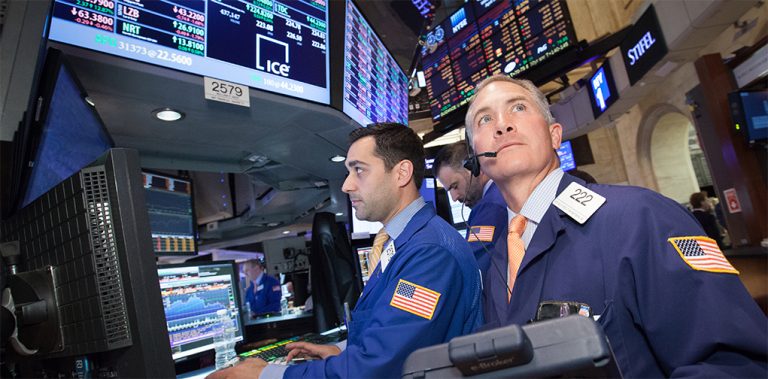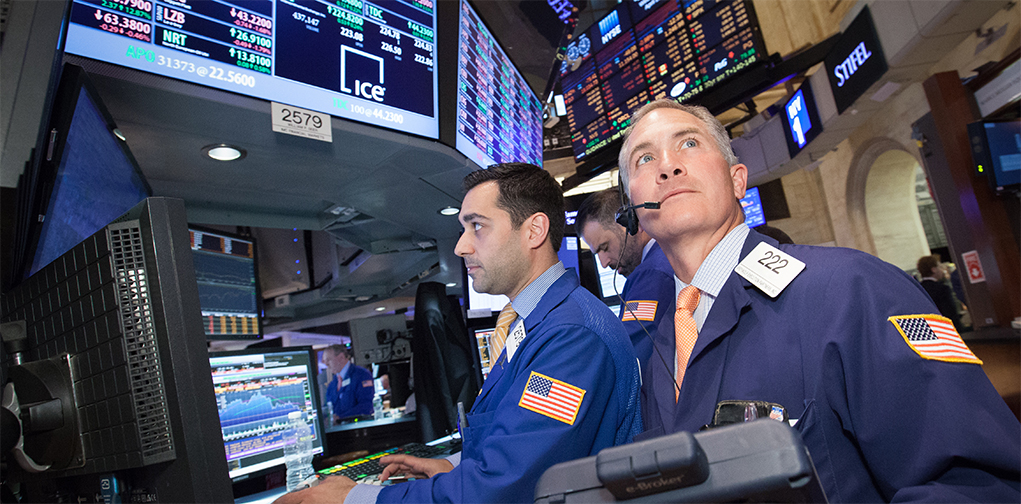

It’s a digital world out there, and that has a big impact on millennials’ investing. The generation that’s grown up in it doesn’t invest the way their grandparents did. We’ve used TipRanks Smart Portfolio tool to track demographic data on investors, based on more than 57,000 uploaded portfolios in the Smart Portfolio tool. While those under age 35 are still a minority of market investors, their stock preferences reflect their Information Age upbringing.
Those preferences tilt heavily towards tech; millennials’ stock choices gravitate to ecommerce, apps, and cloud computing. When they do invest heavily in manufacturing, their tech bent is still clear: millennials like AMD, which makes semiconductor chips, and Tesla, which is pushing the envelope of electric and self-driving cars. We’ve found five stocks for which millennials make up more than one-fourth of the investor base; let’s take a closer look.
Alibaba Group Holdings, Ltd. (BABA)
Alibaba is best known as the Chinese version of Amazon.com (AMZN). From the individual portfolios that TipRanks tracks, the data shows that 26% of BABA shareholders are under the age of 35. This age group has never known a world without online retail, and so an ecommerce platform is naturally an attractive investment for them. BABA brings advantages to this age group that AMZN lacks.
To start with, stock in BABA costs only a fraction of AMZN’s famously high $1,943 share price, and important point for a cohort that came of age only to face the Great Recession. Secondly, BABA has a high 22.9% upside potential, the highest among the stocks we’re looking at here.

Alibaba finds that upside in its market position – the company is the largest online retailer in China, the world’s most populous country and second largest economy. Even though only half of China’s 1.4 billion population has regular internet access, BABA can still rely on a domestic customer base of 600 to 700 million, about double the United States’ total population of 330 million. And Alibaba can rely on its domestic base growing, as even though China’s government restricts online access – and especially access to the global internet – increasing urbanization and improving infrastructure means that more and more Chinese will have web access in the near- to mid-term.
Susquehanna analyst Shyam Patil believes that China’s increasing digitization will benefit Alibaba, as the company has payment apps and other platforms that will gain market share in newly opened second-tier city markets. He said, “In addition to targeting sales in lower-tier cities, Alibaba has been expanding its service businesses in those places, but investment has been fairly disciplined. The company is trying to take advantage of its existing ecosystem to keep customers from defecting without spending too much on marketing.” Patil gives BABA a $205 price target, with an upside potential of 15%.
Alibaba’s strong buy in the analyst consensus comes from a unanimous 16 buy ratings assigned in the past three months. The stock’s $219 average price target gives it a 22% upside from the share price of $178.
Advanced Micro Devices, Inc. (AMD)
You can’t have modern high tech without the ubiquitous silicon semiconductor, so it only makes sense that a cohort which likes tech companies would also like the chip makers. That is one reason why, according to TipRank’s Smart Portfolio tracking, millennials make up 27% of AMD’s shareholders.
Another important reason is the stock’s low share price. The millennial generation came of age in a financial squeeze, so cost of entry is an important point that young investors take seriously. AMD shares run just $34. Even better, the company’s chips are highly competitive in the PC market, and the company is taking market share from its larger competitor, Intel (INTC). The new 7nm chips are expected to do particularly well.
AMD has proven it can recover from hard time. After losing heavily in the last quarter of 2018, the stock has enjoyed over seven months of rising values, gaining a whopping 84% year-to-date. It’s the kind of performance that investors want to see. It’s also a performance that has brought out some surprisingly bearish analyst reviews.
Mizuho’s Vijay Rakesh both raised his price target and downgraded his rating on AMD, saying “With the stock past our PT [his previous $33 price target] and at a 10-year high, we see 2H upside more limited. We would revisit at a more attractive entry point as the [product] roadmap is still intact.” Rakesh’s new price target suggests an 8% upside to the stock, although his current rating is a hold.
Analyst David Wong, of Nomura, also sets a $37 price target on AMD, but with a bullish cast while noting strong prospects from upcoming product releases. In his note, he points out, “The company yesterday announced global availability of five new 7nm 3rd Generation Ryzen desktop CPUs, two new Ryzen 3000 desktop processors with integrated graphics, and three new GPUs in its 7nm Navi family.”
AMD reports earnings on Tuesday, July 30. The company is expected to show 5 cents EPS, down from 10 cents one year ago but up from 3 cents last quarter. In the meantime, AMD’s $34.25 average price target gives it less than 1% upside from the current share price. The moderate buy analyst consensus is derived from 13 buys and 8 holds.

Uber Technologies, Inc. (UBER)
The online ride-sharing app Uber just went public this past spring, and 27.6% of the individual UBER investors in the TipRanks database belong to the millennial age group. It’s no surprise. This age group is more likely to be urban and digitally connected, while big-city-dwellers generally are less likely to own cars; in short, millennials are a large part of Uber’s target audience, and investors of all stripes like putting their money into familiar companies.
Whether or not Uber is a good investment may be a subject for debate. Last quarter, Uber’s first as a publicly traded entity, the company posted an operating loss of $2.39 per share. For the current quarter, the August 8 earnings report is expected to show a larger EPS loss of $3.33. Uber’s business model lies at the bottom of the losses – the company is simply not configured to turn a profit. It has been pursuing market share growth at all costs, without taking into account cost factors in the urban car service industry.
In the meantime, however, Uber continues to hold a buy rating and a high upside. Consider this the risk stock that millennials love. The business model won’t necessarily turn a profit, but market analysts see a real chance for shares to provide a return through price gains. Brian Nowak, writing from Morgan Stanley, sees evidence that Uber is beating the competing in the UK markets: “Uber’s app downloads in the UK continue to be steady. We note that Uber’s share of downloads dropped modestly following Bolt’s launch, but has since recovered.” He gives UBER a $56 price target, suggesting an upside of 25%.
More recently, Merrill Lynch’s Justin Post sees potential gains for Uber in the movement forward of California Assembly Bill 5. The bill, concerning independent contractor status of workers, will clarify a California Supreme Court decision while codifying contractor standards under new law. A legally defined settlement will be a net plus for both Uber and its drivers, and Post gives the stock a $53 price target along with his buy rating. His target indicates a 20% upside.
Overall, UBER gets a moderate buy from the analyst consensus, based on 21 buys and 9 holds since its May IPO. Shares are selling for $44, and the average price target of $53 gives a 20% upside.

Slack Technologies, Inc. (WORK)
Slack, like Uber, is another recent IPO. The software company went public in the latter part of June, with an initial price of $38.50 per share. The IPO brought in nearly $20 billion in new cash for Slack, and 28% of Smart Portfolio users invested in Slack are in the under-35 age group.
Slack will likely need every penny it can raise. Its eponymous product is a cloud-based workplace collaboration software, offered on the freemium model in which base versions are available without charge while additional features and upgrades are available by subscription. The Slack software, however, faces stiff competition from established players in the industry, names like Microsoft (MSFT), Alphabet’s Google (GOOGL), and Salesforce (CRM). The tough niche Slack faces underlies the wait-and-see stance on the stock, articulated clearly by Citigroup’s Walter Pritchard: “Both Microsoft and Alphabet see the productivity and collaboration software category as a strategic imperative and are investing, which will keep competitive pressure on Slack.” While Pritchard puts a hold rating on WORK shares, his price target of $39 suggests a 14% upside.
Other analysts are more bullish. KeyBanc’s Brent Bracelin initiated his coverage of WORK with a buy rating and a $44 price target, pointing out “…the potential to become an automation platform for the middle-office where revenue could eclipse $3B within five years and $10B within ten years.” Bracelin is rated #4 overall in the TipRanks database; his target suggests that WORK has a 29% upside.
Like many newly public stocks, Slack gets a moderate buy rating from the analyst consensus. The rating is derived from 7 buys and 6 holds since the IPO. Shares are selling for $34, so the $39 average price target indicates a possible upside of 16%.

Tesla, Inc. (TESLA)
Of all the names in this list, Tesla probably generates the most disparate opinions. The lack of agreement on the company is due in no small part to founder Elon Musk’s clear talent for generating both buzz and fuss, but also due to the company’s position in the electric car niche, its trouble generating investor profits, and the clear qualitative superiority of its vehicles. Tesla manages to combine the solidity of an auto company with the risky reputation of a tech startup, and it is something of a magnet for young investors; in the Smart Portfolio tracker, millennials make up 34.4% of TSLA shareholders.
They might not be happy. Tesla just posted – on July 24 – an operating loss of $2.31 per share, despite beating forecasts on auto production. Price reductions have hurt margins, while increasing competition is reducing space in the electric car niche. Rajvindra Gill, of Needham, sees the stock as a sell, saying, “While the company affirmed its FY19 delivery target and forecast profitability in Q4, we are cautious on Tesla’s ability to fulfill these goals as the ramp requires a significant snapback in the second half of 2019.” Gill declines to set a price target for TSLA shares.
There are bulls on Tesla, however. Oppenheimer’s Colin Rusch is cautious, saying, “We increasingly believe the success of Tesla, both medium- and long-term, is dependent on its ability to drive cost out of its battery pack and optimize range to support gross profit per vehicle and volume of sales.” Even so, he gives the stock a buy rating with a $356 price target that suggests an impressive 56% upside.
Writing from JMP Securities, Joseph Osha is even more optimistic. He notes, “The company is having more success controlling operating costs than we had thought. Free cash flow at $600 million was $100 million better than we had modeled, partially because of working capital recapture and partially because of the cost control efforts.” Osha’s price target, $337, while lower than Rusch’s, still indicates room for an upside of 47%.
Tesla’s overall rating, based on 8 buys, 7 holds, and 14 sells set in the past three months, is a hold. The stock’s current share price is $228, and the average price target of $251 suggests a 10% upside. As pointed out above, the coming months will determine where TSLA goes from here; that risk, however, has not kept millennial investors away from the company.
